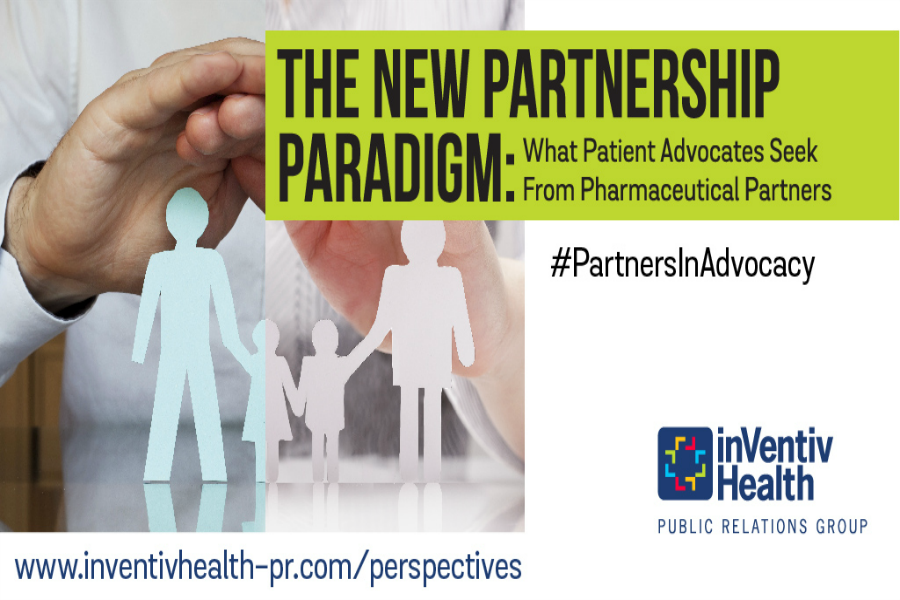Paul Holmes 23 Feb 2015 // 8:39AM GMT

With more than 100 cases of measles reported this year across 14 states—the majority of them traced back to an outbreak at Disneyland in California—the media spotlight is focused on America’s anti-vaccination movement, which must bear the brunt of the blame for the resurgence of a disease once thought to have been eradicated.
Before the introduction of a live measles vaccine in 1963, the average number of measles cases in the US was around 550,000 a year, with about 500 of those resulting in death. That number has declined steeply, and between 2001 and 2011, the median number of measles cases reported per year was just 62.
But last year saw more than 600 cases in the US, and this year is now on track to exceed that number.
It is clear that anti-vaccination concerns are creating a major public health issue, but they also pose a massive communications challenge: many of those who refuse to vaccinate their children are immune to the most obvious methods of persuasion, whether that means presenting them with the facts about vaccination or trying to convince them that their behavior poses a real risk to the wider community.
It is far from clear what kind of messaging can overcome the climate of fear around vaccines, or who can deliver those messages credibly to change behaviors—but it is clear that a new approach is needed.
The Origins of a Health Crisis "Fear, ambivalence and ignorance are powerful obstacles.” The anti-vaccine movement began in earnest in 1998 following the publication in The Lancet of a study by British doctor Andrew Wakefield that suggested a relationship between the measles-mumps-rubella vaccine and autism.
“Suddenly prevention became medical roulette,” says Gil Bashe, who leads the healthcare practice at Makovsky. “In seeking to defend against illnesses like measles, some unfortunate child might draw the short straw of autism. Now there is no lack of information to disprove this decade-old myth, and no lack of authoritative voices urging people to get vaccinated. But fear, ambivalence and ignorance are powerful obstacles.”
As Bashe says, the study that started it all has since been discredited and its data shown to be falsified, and Wakefield has lost his medical license, but the study was seized upon my concerned parents and many continue to believe that Wakefield was the victim of a witch-hunt by the medical establishment—and large pharmaceutical companies in particular.
Jennifer Wayman, managing director of social change at Ogilvy Public Relations, believes that the persistence of vaccination misinformation comes down to “the unfortunate overlap in the timing between when the MMR vaccine is administered and the typical age at which toddlers start showing symptoms of autism. The two often happen at about the same time. So parents get their kids vaccinated and right away they start showing autism symptoms.”
She also sees a connection between anti-vaccination attitudes and “a time when parents are increasingly choosing a natural parenting style: natural childbirth, cloth diapers, breastfeeding, and whole or natural foods. For these parents, the only unnatural thing going into their babies’ bodies are vaccines. And that is concerning and scary.”
For all of these reasons, the anti-vaccination movement has not only persisted in the face of all the scientific information, it has grown. Last year, The Atlantic reported that in some neighborhoods in LA, ground zero for the anti-vaccination movement, the rates of vaccination are as low as in South Sudan.
It’s important to put that in context. Across the United States, the vast majority of parents continue to get their children vaccinated. Says Wendy Lund, CEO of GCI Health: “Communications in support of on-time vaccination have been overwhelmingly effective to this point. Vaccination rates are high.”
Conventional Communication Has Not Helped “Throwing facts and science at people is ineffective. It doesn’t change people’s minds and it can make the problem worse.” While that’s true, even a relatively small percentage of anti-vaccination parents can threaten the “herd immunity” that vaccination has achieved. For herd immunity to protect the entire population, vaccination rates need to be at 90-95 percent, experts say. And it is beginning to fall below that level—in some communities, alarmingly so.
The fact that this is happening despite overwhelming consensus that vaccines are safe is obviously troubling.
“Vaccination has become a very emotional issue on both sides, but the fact remains that vaccines save lives,” says Lund. “The data support this. The dramatic reductions in disease cases can be directly tied to vaccines. The elimination of diseases like polio and smallpox can be directly tied to vaccines. The proof is there.”
But clearly the proof is not convincing to many people. In fact, there are reasons to believe that presenting the facts may be counterproductive.
Brendan Nyhan, a political scientist at Dartmouth College in New Hampshire, published a study in March last year that divided nearly 1,800 parents into groups and presented each with different information, based on material provided on the web by the CDC. One group was told about the lack of evidence about any link between the MMR vaccine and autism. A second group was told of the danger from diseases that the vaccine prevents. Other groups were shown photos of children with measles, mumps, and rubella, or presented with a true story from the CDC website about an infant who almost died of measles.
None of the messages had a positive impact on the parents’ intent to vaccinate, and some were counterproductive. The images of sick children actually increased belief in a link between vaccines and autism, and the story about the child who nearly died heightened concerns about side effects.
“Throwing facts and science at people is ineffective,” Nyhan told BuzzFeed News. “It doesn’t change people’s minds and it can make the problem worse.”
Equally ineffective, one suspects, is the stigmatization of those who hold anti-vaccine beliefs. In one recent article in the Los Angeles Times, these concerned parents were “dolts,” “ill-informed,” and “stupid” people, guilty of “casual ignorance,” whose fears are “worn as a badge of sophisticated nonconformity.”
This is not language designed to make people reflect on their position and reconsider their opposition.
But even the best-intentioned education campaign could have unintended consequences. Diehl, for one, is concerned about the possibility that any mass market campaign to address the concerns of the anti-vaccination movement could backfire. Citing research from Yale University, she says: “Aggressively promoting the benefits of vaccines to people who do vaccinate may raise questions that didn’t exist before.”
But such a campaign may now be inevitable, she acknowledges. “As we face the prospect of more and more outbreaks of vaccine preventable diseases and the news cycles that will inevitably come with them, these mass-audience discussions may be unavoidable. What may be most important is to avoid over-representing the number of people who are denying vaccines. In terms of promoting health behaviors, ‘everyone is doing it’ is more powerful than ‘tsk, tsk, you should do it.’
“If, in the effort to push back on vaccine misinformation, we create a perception that there’s mass resistance to vaccines, it will cause more harm than good.”
Who’s Credible?
To minimize the risk, it is obviously important to ensure that the source of information is credible.
“There is no shortage of credible information on vaccines,” says Lund. “The Centers for Disease Control & Prevention and the American Academy of Pediatrics are probably the best starting points. And groups like Every Child By Two, the Immunization Action Coalition and Parents of Kids with Infectious Diseases, among others, are all excellent sources of credible information and resources that are easy to understand by parents.”
But those traditional authorities have not yet been successful in changing hearts and minds, and not everyone is convinced that government organizations are sufficiently credible when it comes to reaching anti-vaccine parents.
“The government has been trying to allay these fears for over a decade, to no avail,” says Wayman. “Parents—and people in general—do typically trust their physicians, but for some reason when it comes to their own babies, antivaxxers believe they intuitively know what’s best. And so they seek doctors who are more flexible with vaccination schedules.”
Pharmaceutical companies are even less credible.
“We’re living in the post-trust era,” says Clint Sievers, vice president at maslansky + partners. “Levels of trust in anyone in authority—from government to corporations, financial advisors to scientists—is at an all-time low.”
He cites a Pew Research Center study on Science and Society, which shows a persistent gap between scientific consensus and public perception on a range of issues, including vaccines: 86 percent of scientists agreed that “childhood vaccines like MMR should be mandatory,” compared to just 68 percent of the general population.
Pharmaceutical companies, in particular, do not have the levels of trust needed to persuade a skeptical audience. “There are deeply held beliefs that the industry would rather sell products than do what’s best for people,” Sievers says. “That lack of trust affects how messages are interpreted, and constrains what you can credibly say to convince skeptics.”
Any successful communications campaigns will require the involvement of the broader healthcare community.
“It all starts with healthcare providers,” says Lynn Hanessian, chief science strategist at Edelman. “The 2015 Edelman Trust Barometer explored trust in five sub-sectors of health—hospitals and clinics, pharmaceutical companies, biotech and life sciences, consumer health and OTC companies, and payers/insurers.) Hospitals and clinics were most trusted and should certainly be part of the equation in any education effort.
“Healthcare professionals, especially pediatricians, likely have the most critical role to play in educating patients, but we shouldn’t over-rely on the HCP encounter,” says Berna Diehl, senior vice president at JPA Health Communications. “Trust in physicians may be high, but office visits can be short, which makes it tough to have thoughtful discussions on the risks and benefits.”
In addition, “in the era of Patient 2.0, many patients are coming to their office visits with opinions already formed. By the time they show up for a visit, they may have already embraced a narrative that is difficult to undo.”
As in so many trust issues, friends and family, and others in the local community, are perhaps the most likely to be credible and persuasive.
Experts in the vaccination community believe that “local validators” are key to making a difference, Wayman says. “These are trusted, credible individuals and organizations in a community that influence people at a local level. They are likely to include doctors, faith leaders, local newscasters, parent teacher organizations.... As we’ve learned with the measles outbreak, anti-vaccination is a local issue; we are seeing geographic pockets of antivaxxers. So this issue has to be addressed locally—through thoughtful community engagement that is supported with a comprehensive multimedia campaign.”
What’s the Right Message?“Simply put, sometimes the facts don’t matter."Professional communicators have a wide range of ideas about what might work with hardcore resisters in terms of messaging.
“We need to tell more stories about the vaccine-preventable diseases,” says Wayman. “Most parents with vaccination-age children today—and many physicians—haven’t seen most of the diseases that their children are being vaccinated against. They haven’t seen first-hand the devastating effects that those diseases have, so the threat does not seem real.”
But the current outbreaks of measles around the country are beginning to make the issue more real.
“Sadly, this measles outbreak may be just the antidote that we need—a tipping point,” says Wayman. “This outbreak has shined an unprecedented spotlight on this issue and we are seeing parents begin to rethink their anti-vaccination commitment. We are also seeing pro-vaccine parents voicing their support for vaccinations through social media channels as well as off-line forums, with a frequency and reach that has not been seen before. This is helping to shift the social norms and, anecdotally, the opinions of some “on the fence” parents who are now leaning in favor of vaccination.”
“The pleas of parents whose infants are now fighting this disease would go straight to the heart of this matter,” says Edelman’s Hanessian. “This must join the rising chorus of definitive voices—healthcare providers, public health officials, parents sharing information and their outrage in social media—that are anchored in the science around the importance of vaccines as the standard for health care.”
However, others are concerned that the backlash now dominating media coverage could backfire.
“We have years of frustration bubbling up from the pro-vax medical community now,” says Diehl. “You can see it in the media coverage: ‘Bar those kids from school!’ ‘Strip those anti-vax docs of their licenses!’ ‘Get rid of exemptions!’ The anger is understandable. But, strategically, if pro-vaxxers over-capitalize on the current measles moment and channel too much outrage, shaming and insults, it will give anti-vaxxers new collateral to reinforce an ‘us vs. them’ mentality and stoke fears of big government versus individual liberties.”
Given that mentality, there are some who believe that fewer exemptions and stricter enforcement may be the only answer.
“As with mandatory seatbelts, sometimes public welfare cannot be coaxed but must be required by public policy,” says Bashe. “The angst around vaccines grips a generation and will not be resolved by celebrities or public officials. Policies are first laws and then behaviors – the repetitive nature of action overcomes baseless fear.”
But others see new communications ideas and techniques as a better solution.
“These are highly emotional and politicized issues,” Sievers says. “They deal with my family, and my children. In other words, skeptics of the science on these issues often have deeply held beliefs, and making this a black-or-white, yes-or-no question that attempts to show them why they’re wrong will only fuel anger and opposition.”
He suggests a number of principles that communicators can adopt in such situations:
· Forget the facts. “Simply put, sometimes the facts don’t matter. People don’t like being told what to believe or what to do, especially when it involves their children. When you’re dealing with someone who rejects science and statistics, you can’t simply throw more evidence at them. You need a more emotional approach to communicating.”
· Validate their questions. “The first step toward a more emotional, engaging conversation is to start with some common ground. In our agriculture work, for example, we show clients how starting the conversation with the statement, ‘you have a right to be concerned’ opens up a new and more productive conversation. It’s not agreeing with their solution but it at least gives them permission to ask questions and puts you on the same side of the table.”
· Respond to their concerns. “Really respond. It’s not enough to acknowledge their questions and then pivot to, ‘but let me show you the ways that vaccine/autism study has been disproved.’ You actually have to engage them in a conversation.”
· Be vulnerable. “Even when we know the science is on our side, we don’t always know the answer to every question. We tell clients all the time that sometimes an honest ‘I don’t know’ is the best response. You’ll get credit for being open, and you’ll show that you really are trying to understand their position.”
· Find a benefit. “Many people are concerned about vaccinations because of the potential for something to go wrong. But that means they may not realize—or even think about—the many benefits of vaccines. Find an emotional, evocative benefit that resonates, and you can begin to change their viewpoint, even if not their opinions.”
It is a commonplace in risk communication that empathy is important—but that it can also be difficult for those in authority to empathize with people they consider ill-informed, anti-science, even hysterical. At the same time, there are many who believe that the PR industry is over-confident in the power of facts to persuade, and not necessarily comfortable with appeals to emotion.
The industry will need to be more empathic, and better at telling emotionally-impactful stories, to meet the toughest behavior-change challenges of the future.


































.jpg)























.tmb-135x100.jpg)










